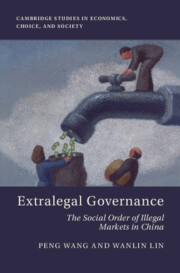Refine search
Actions for selected content:
3380878 results
8 - Paradoxes of American and German Housing Policy
-
- Book:
- Through the Roof
- Published online:
- 28 August 2025
- Print publication:
- 11 September 2025, pp 236-264
-
- Chapter
- Export citation
1 - From Confederation to Constitution
-
- Book:
- The Nation at Sea
- Published online:
- 28 August 2025
- Print publication:
- 11 September 2025, pp 13-44
-
- Chapter
- Export citation
The Face of the Nation. Gendered Institutions in International Affairs. By Elise Stephensen. Oxford: Oxford University Press, 2024. 304 pp. $95.00 (hardcover). ISBN: 9780197632727
-
- Journal:
- Politics & Gender , First View
- Published online by Cambridge University Press:
- 11 September 2025, pp. 1-3
-
- Article
- Export citation
Meet the Contributors
-
- Book:
- Learning through Social Work Stories-That-Matter
- Published online:
- 28 August 2025
- Print publication:
- 11 September 2025, pp ix-xxiv
-
- Chapter
- Export citation
Index
-
- Book:
- The Nature of the Ottoman City
- Published online:
- 28 August 2025
- Print publication:
- 11 September 2025, pp 199-204
-
- Chapter
- Export citation
Figures
-
- Book:
- Black Catholic Worlds
- Published online:
- 28 August 2025
- Print publication:
- 11 September 2025, pp ix-x
-
- Chapter
- Export citation
Chapter 7 - Tragedy
- from Part I - Forms and Genres
-
-
- Book:
- The Cambridge Companion to Modernist Theatre
- Published online:
- 28 August 2025
- Print publication:
- 11 September 2025, pp 126-143
-
- Chapter
- Export citation
Chapter 25 - What Next?
- from Part II - Lenses and Lessons
-
-
- Book:
- Learning through Social Work Stories-That-Matter
- Published online:
- 28 August 2025
- Print publication:
- 11 September 2025, pp 361-364
-
- Chapter
- Export citation

Extralegal Governance
- The Social Order of Illegal Markets in China
- Coming soon
-
- Expected online publication date:
- September 2025
- Print publication:
- 25 September 2025
-
- Book
- Export citation
Oral antibiotic stepdown therapy for uncomplicated streptococcal bloodstream infections
-
- Journal:
- Antimicrobial Stewardship & Healthcare Epidemiology / Volume 5 / Issue 1 / 2025
- Published online by Cambridge University Press:
- 11 September 2025, e211
-
- Article
-
- You have access
- Open access
- HTML
- Export citation
9 - Turning Every Page
-
- Book:
- Ability and Difference in Early Modern China
- Published online:
- 10 September 2025
- Print publication:
- 11 September 2025, pp 212-230
-
- Chapter
- Export citation
5.7 (18) - On Whether or Not There Are Ideas of Individuals
- from Ennead Five
-
- Book:
- Plotinus: The Enneads
- Published online:
- 11 September 2025
- Print publication:
- 11 September 2025, pp 609-612
-
- Chapter
- Export citation
Party system types and the decline of systemness in Western Europe: are party system classifications still useful?
-
- Journal:
- Italian Political Science Review / Rivista Italiana di Scienza Politica , First View
- Published online by Cambridge University Press:
- 11 September 2025, pp. 1-9
-
- Article
-
- You have access
- Open access
- HTML
- Export citation
Aldborough and the metals economy of northern England, c. AD 345–1700: a new post-Roman narrative
-
- Journal:
- Antiquity , First View
- Published online by Cambridge University Press:
- 11 September 2025, pp. 1-21
-
- Article
-
- You have access
- Open access
- HTML
- Export citation
References
-
- Book:
- Ability and Difference in Early Modern China
- Published online:
- 10 September 2025
- Print publication:
- 11 September 2025, pp 252-270
-
- Chapter
- Export citation
Figures
-
- Book:
- The Cambridge Companion to Modernist Theatre
- Published online:
- 28 August 2025
- Print publication:
- 11 September 2025, pp ix-x
-
- Chapter
- Export citation
Dedication
-
- Book:
- Black Catholic Worlds
- Published online:
- 28 August 2025
- Print publication:
- 11 September 2025, pp v-v
-
- Chapter
- Export citation
6.9 (9) - On the Good or the One
- from Ennead Six
-
- Book:
- Plotinus: The Enneads
- Published online:
- 11 September 2025
- Print publication:
- 11 September 2025, pp 884-902
-
- Chapter
- Export citation
Nutrition Science, Palestinian Food, and Jewish Settlers’ Acclimatization: The Work of Moshe Wilbushewich
-
- Journal:
- International Journal of Middle East Studies , First View
- Published online by Cambridge University Press:
- 11 September 2025, pp. 1-20
-
- Article
-
- You have access
- Open access
- HTML
- Export citation
Practical issues in recruiting and retaining Asian American breast cancer survivors in a technology-based intervention study: A discussion paper
-
- Journal:
- Journal of Clinical and Translational Science / Volume 9 / Issue 1 / 2025
- Published online by Cambridge University Press:
- 11 September 2025, e198
-
- Article
-
- You have access
- Open access
- HTML
- Export citation
